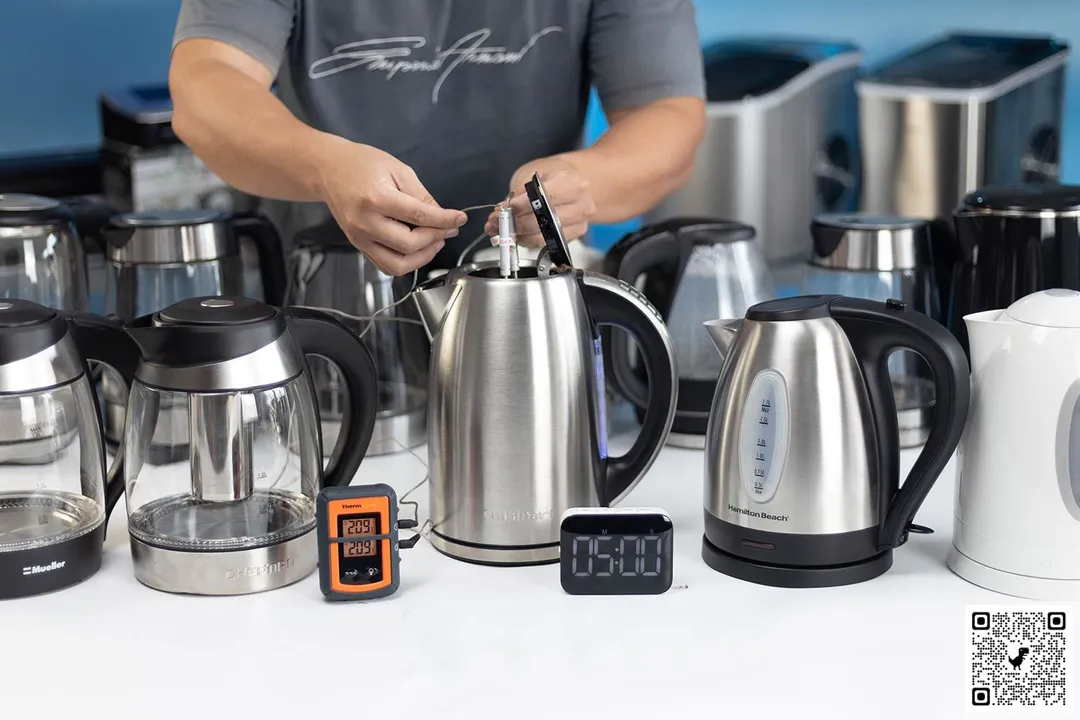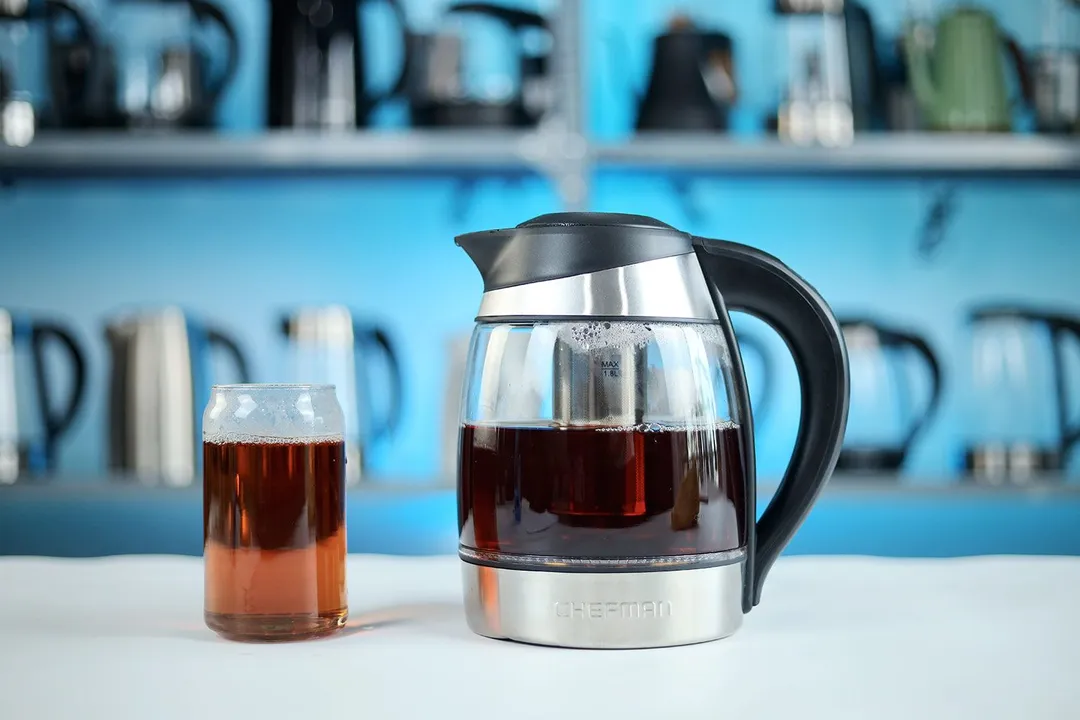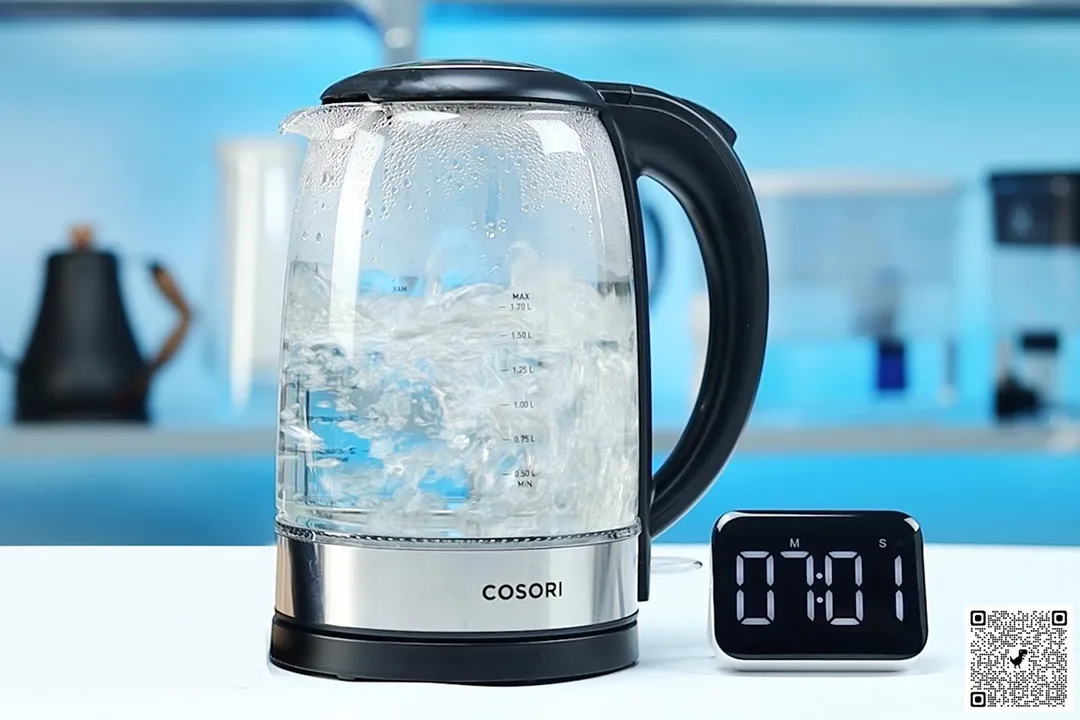Our recommendations are made independently through Research & Testing. We may receive commissions from purchases made via our links.
Things to Keep in Mind When Buying the Best Electric Kettles
Things to keep in mind when buying the best electric kettles. Check out 7 key desirable qualities of a good electric kettle.
Over the course of us testing different electric kettles, we’ve identified a number of key desirable qualities regarding their performance, design, usability, and lastly, price. Don’t forget about these 7 qualities when shopping for your next electric kettle.

1. Aim for 1500 W or Above
Our tested electric kettles have a power output ranging from 1000 to 1500 W and they work well. Nonetheless, we recommend a kettle of 1500 W or above if possible. From our data, these boil faster and don’t necessarily consume more energy, contrary to popular belief.
2. Stainless is Best
The best material for an electric kettle is stainless steel, especially double-walled. Stainless steel kettles are durable with excellent heat retention properties and don’t cost that much more than glass or ceramic nowadays.
Ceramic kettles, while popular for their aesthetics, are heavy and can also be broken easily like glass. These kettles often lack additional handy features.
Plastic kettles, on the other hand, are very light. However, they can impart a plastic odor to your water if the quality is poor and some people worry about micro-plastic particles.
3. Ideal volume is 1.7 L
Capacities can vary from a minimum of 0.5 to a maximum of 2 liters, with the majority being 1.7 L (57.48 fl. oz. or 7 cups). Although that’s a lot for even a couple of hot beverages, it’s the ideal capacity for many types of kitchen preps like reconstituting a large amount of stock base or preparing a water bath for delicate cheesecakes or custards.
Electric kettles with a higher power draw boil faster by capacity than stove top kettles or microwaves. Gooseneck kettles, however, tend to be smaller and around 0.5 to 1 L. This is also an ideal volume for pour-over coffee but they don’t have any type of mesh filter in order not to hinder water flow.
4. Temperature Control and Presets
By-the-degree temperature control is the most desirable feature in an electric kettle. It’s easier to make different beverages and you can save on time and energy. Most kettles with temperature control can also keep warm at your selected temperature.
Presets are not the same, nor as functional, as manual temperature adjustment. Some products claim to have temperature control while in reality they only have presets. These presets cater to certain types of coffee and teas like white tea, black tea, oolong tea, but with varying degrees of accuracy.
5. Mesh Filter and Wide Opening
Try to get a kettle with a mesh filter for better removal of limescale and make sure it’s removable for easy cleaning. Likewise, a wide lid opening makes it easy to reach inside to clean.
6. Round Power Cords Work Best
Choose a kettle with a round power cord instead of flat. A common disadvantage of flat power cords is that they don’t fit nicely into the cord opening of the base and can fall off after wrapping around the storage.
7. Check the Safety Features
As mentioned, most modern electric kettles have the automatic shutoff and boil-dry protection features that make them super safe. Nonetheless, it’s advised to check if the product actually has these features.
About your tip
Alan Nguyen is a writer and product reviewer at HealthyKitchen101. His major in English language teaching taught him to present concise information. In addition to his cooking hobby, he values the practical aspects of household appliances.




